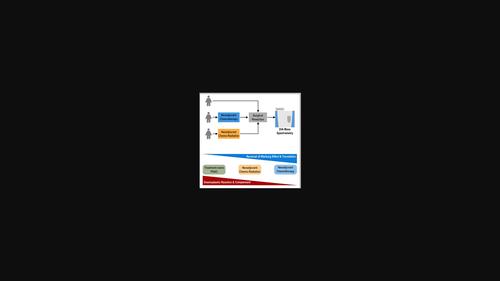当前位置:
X-MOL 学术
›
Int. J. Cancer
›
论文详情
Our official English website, www.x-mol.net, welcomes your feedback! (Note: you will need to create a separate account there.)
Neoadjuvant chemo- or chemo-radiation-therapy of pancreatic ductal adenocarcinoma differentially shift ECM composition, complement activation, energy metabolism and ribosomal proteins of the residual tumor mass
International Journal of Cancer ( IF 6.4 ) Pub Date : 2024-02-14 , DOI: 10.1002/ijc.34867 Maren N. Stillger 1, 2 , Konrad Kurowski 1, 3 , Peter Bronsert 1, 3, 4 , Eva Brombacher 2, 5, 6, 7 , Clemens Kreutz 5 , Martin Werner 1, 3 , Laura Tang 8 , Sylvia Timme‐Bronsert 1 , Oliver Schilling 1, 3
International Journal of Cancer ( IF 6.4 ) Pub Date : 2024-02-14 , DOI: 10.1002/ijc.34867 Maren N. Stillger 1, 2 , Konrad Kurowski 1, 3 , Peter Bronsert 1, 3, 4 , Eva Brombacher 2, 5, 6, 7 , Clemens Kreutz 5 , Martin Werner 1, 3 , Laura Tang 8 , Sylvia Timme‐Bronsert 1 , Oliver Schilling 1, 3
Affiliation

|
Pancreatic ductal adenocarcinoma (PDAC) is a highly lethal cancer, often diagnosed at stages that dis-qualify for surgical resection. Neoadjuvant therapies offer potential tumor regression and improved resectability. Although features of the tumor biology (e.g., molecular markers) may guide adjuvant therapy, biological alterations after neoadjuvant therapy remain largely unexplored. We performed mass spectrometry to characterize the proteomes of 67 PDAC resection specimens of patients who received either neoadjuvant chemo (NCT) or chemo-radiation (NCRT) therapy. We employed data-independent acquisition (DIA), yielding a proteome coverage in excess of 3500 proteins. Moreover, we successfully integrated two publicly available proteome datasets of treatment-naïve PDAC to unravel proteome alterations in response to neoadjuvant therapy, highlighting the feasibility of this approach. We found highly distinguishable proteome profiles. Treatment-naïve PDAC was characterized by enrichment of immunoglobulins, complement and extracellular matrix (ECM) proteins. Post-NCT and post-NCRT PDAC presented high abundance of ribosomal and metabolic proteins as compared to treatment-naïve PDAC. Further analyses on patient survival and protein expression identified treatment-specific prognostic candidates. We present the first proteomic characterization of the residual PDAC mass after NCT and NCRT, and potential protein candidate markers associated with overall survival. We conclude that residual PDAC exhibits fundamentally different proteome profiles as compared to treatment-naïve PDAC, influenced by the type of neoadjuvant treatment. These findings may impact adjuvant or targeted therapy options.
中文翻译:

胰腺导管腺癌的新辅助化疗或化疗放射治疗会差异性改变残余肿瘤块的 ECM 组成、补体激活、能量代谢和核糖体蛋白
胰腺导管腺癌(PDAC)是一种高度致命的癌症,通常在不适合手术切除的阶段被诊断出来。新辅助疗法提供了潜在的肿瘤消退和改善的可切除性。尽管肿瘤生物学特征(例如分子标记)可以指导辅助治疗,但新辅助治疗后的生物学改变在很大程度上仍未被探索。我们对接受新辅助化疗 (NCT) 或化放疗 (NCRT) 治疗的 67 例 PDAC 切除标本进行了质谱分析,以表征其蛋白质组。我们采用数据独立采集 (DIA),产生了超过 3500 个蛋白质的蛋白质组覆盖率。此外,我们成功整合了两个未接受治疗的 PDAC 的公开蛋白质组数据集,以揭示新辅助治疗引起的蛋白质组改变,强调了这种方法的可行性。我们发现了高度可区分的蛋白质组图谱。未经治疗的 PDAC 的特点是免疫球蛋白、补体和细胞外基质 (ECM) 蛋白的富集。与未经治疗的 PDAC 相比,NCT 后和 NCRT 后的 PDAC 呈现出高丰度的核糖体和代谢蛋白。对患者生存和蛋白质表达的进一步分析确定了治疗特异性预后候选者。我们首次展示了 NCT 和 NCRT 后残留 PDAC 质量的蛋白质组学特征,以及与总体生存相关的潜在蛋白质候选标记。我们得出的结论是,与未接受治疗的 PDAC 相比,残余 PDAC 表现出根本不同的蛋白质组谱,这受到新辅助治疗类型的影响。这些发现可能会影响辅助或靶向治疗的选择。
更新日期:2024-02-14
中文翻译:

胰腺导管腺癌的新辅助化疗或化疗放射治疗会差异性改变残余肿瘤块的 ECM 组成、补体激活、能量代谢和核糖体蛋白
胰腺导管腺癌(PDAC)是一种高度致命的癌症,通常在不适合手术切除的阶段被诊断出来。新辅助疗法提供了潜在的肿瘤消退和改善的可切除性。尽管肿瘤生物学特征(例如分子标记)可以指导辅助治疗,但新辅助治疗后的生物学改变在很大程度上仍未被探索。我们对接受新辅助化疗 (NCT) 或化放疗 (NCRT) 治疗的 67 例 PDAC 切除标本进行了质谱分析,以表征其蛋白质组。我们采用数据独立采集 (DIA),产生了超过 3500 个蛋白质的蛋白质组覆盖率。此外,我们成功整合了两个未接受治疗的 PDAC 的公开蛋白质组数据集,以揭示新辅助治疗引起的蛋白质组改变,强调了这种方法的可行性。我们发现了高度可区分的蛋白质组图谱。未经治疗的 PDAC 的特点是免疫球蛋白、补体和细胞外基质 (ECM) 蛋白的富集。与未经治疗的 PDAC 相比,NCT 后和 NCRT 后的 PDAC 呈现出高丰度的核糖体和代谢蛋白。对患者生存和蛋白质表达的进一步分析确定了治疗特异性预后候选者。我们首次展示了 NCT 和 NCRT 后残留 PDAC 质量的蛋白质组学特征,以及与总体生存相关的潜在蛋白质候选标记。我们得出的结论是,与未接受治疗的 PDAC 相比,残余 PDAC 表现出根本不同的蛋白质组谱,这受到新辅助治疗类型的影响。这些发现可能会影响辅助或靶向治疗的选择。



























 京公网安备 11010802027423号
京公网安备 11010802027423号